Less than a third of businesses use multiple authentication factors to protect their environment.
It is concerning that less than one-third of organizations are leveraging multiple authentication factors to secure their environment. Multi-factor authentication (MFA) is a security measure that requires users to provide multiple pieces of evidence (or “factors”) in order to verify their identity when accessing sensitive systems or data. This can include something the user knows (e.g., a password), something the user has (e.g., a security token or smartphone), or something the user is (e.g., a biometric characteristic such as a fingerprint).
By requiring multiple authentication factors, MFA significantly increases the security of an organization’s systems and data, as it makes it much more difficult for attackers to gain unauthorized access. This is particularly important given the increasing number and sophistication of cyber threats that organizations face today.
One of the reasons why so few organizations are using MFA may be a lack of awareness of its importance. Many organizations may be relying on traditional forms of authentication such as passwords, which can be easily compromised through techniques such as phishing attacks or password cracking. It is important for organizations to understand the risks associated with relying on a single authentication factor, and to implement additional measures such as MFA to protect against these threats.
Another reason for the lack of adoption of MFA may be a lack of resources or technical expertise to implement it. MFA can require additional infrastructure and resources to support it, and it may also require training for users to understand how to use it properly. However, the benefits of MFA far outweigh the costs and effort required to implement it, as it can significantly reduce the risk of unauthorized access to sensitive systems and data.
Overall, it is essential for organizations to prioritize the use of multiple authentication factors in order to secure their environment. This can include measures such as MFA, as well as other security measures such as strong passwords, two-factor authentication, and employee training on cyber security best practices. By taking these steps, organizations can significantly reduce the risk of cyber attacks and protect their systems and data from unauthorized access.




